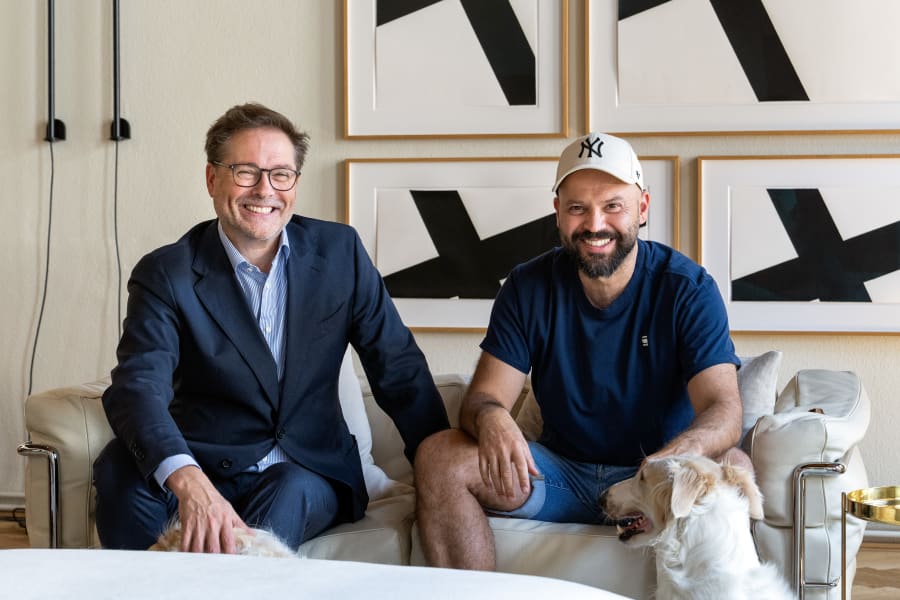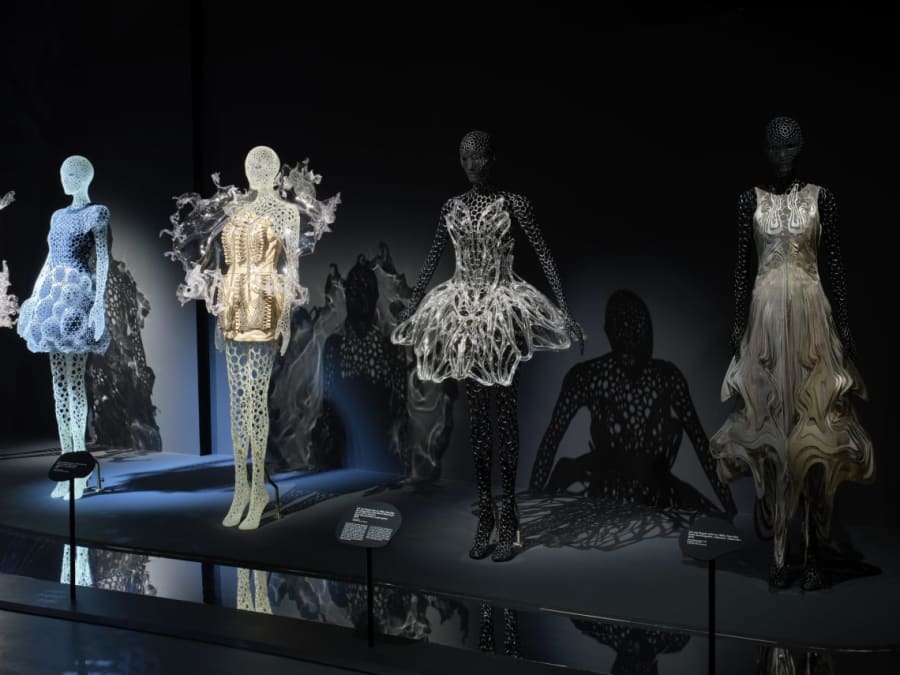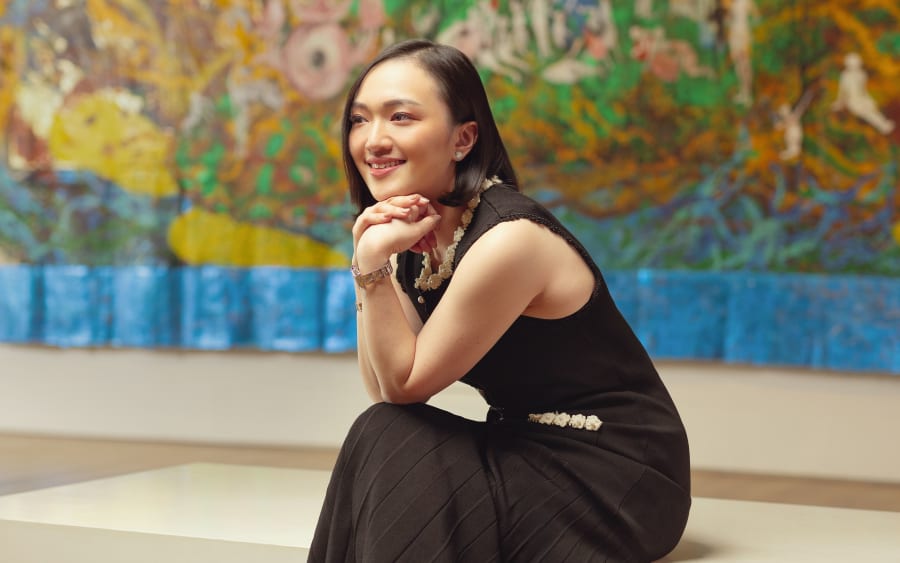When she was five, London-based collector Tia Tanna started to regularly travel with her father to Santa Fe, New Mexico, as he built a collection of Native American and Southwestern art. Across the country in New York, Hall W. Rockefeller would often visit the Metropolitan Museum with her mother, while Astrid Hill’s first encounters with Modern and contemporary art came from leafing through catalogues in her parents’ Manhattan home.
Today, these three women are making their mark as collectors and patrons in their own right – though their passion for art was not necessarily immediate. ‘I was convinced it was a joke,’ Rockefeller recalls of visiting the Rothko Chapel in Houston as a self-described ‘smart aleck’ teen. Tanna too, initially resisted, ‘As a child, I just wasn’t yet able to fully grasp the depth.’ Still, for the three of them, art has always been an important part of their lives, not as decoration or investment, but as something to be valued. Museums and artists provided a framework for better understanding the world.
Now in their 20s, 30s, and 40s, Tanna, Rockefeller, and Hill are representative of new generations stepping into family legacies. Both Tanna and Hill work closely with their parents to steward family collections. Hill also runs Monticule Art Advisory, an art consulting business focused on emerging artists. Rockefeller, the sixth generation in a long line of patrons of the arts – including Museum of Modern Art co-founder Abby Aldrich Rockefeller – is deeply involved with her family’s initiatives. She sits on the Rockefeller Brothers Fund’s Pocantico Committee, which oversees the David Rockefeller Creative Arts Center at the family’s historic estate in Tarrytown in Westchester County, NY. Rockefeller is also the founder of Less Than Half, an organization that encourages women to champion and collect female artists, advocating greater gender equity in the art world.
An art legacy raises questions of identity, responsibility, and direction. ‘I’m very aware of how powerful art collecting is as a tool across generations,’ Rockefeller reflects. ‘You much understand and appreciate yourself as a part of this larger whole, while also exercising your own individual taste and values.’
The Art Basel & UBS Survey of Global Collecting 2024 backs her point: despite assumptions that tastes change radically across generations, 96% of Gen Z and 94% of millennial collectors keep inherited works in their own collections. Among those who do part with some, fewer than a third cite a lack of fit – it is mostly due to a lack of space.
Yet it is also the current generation’s responsibility to extend and reimagine what it means to collect and support art. As Curator of Emerging Artists at the Hill Art Foundation, Hill has been championing the inclusion of younger female artists in a collection spanning Renaissance bronzes and Modern masterpieces by Andy Warhol, Francis Bacon, and Cy Twombly. Recent exhibitions at the foundation’s Chelsea space have included Sam Moyer, Jordan Casteel, and Mika Tajima.
Tanna, too, is expanding the Tia Collection into new areas, supporting emerging artists and, more recently, couture, which she regards as a form of sculpture. ‘It’s just a different medium,’ she says. ‘Instead of something static, it comes alive on a moving body.’ A recent acquisition by Dutch designer Iris van Herpen was included in the Louvre’s recent blockbuster exhibition ‘Art and Fashion: Statement Pieces’.
Rockefeller’s focus is firmly on increasing visibility and equity for women artists, marking a shift in relation to her antecedents. ‘In the past, I don’t think you would ever have had a conversation about being an artist and a mother – not in my parents’ time, and certainly not in my grandparents’.’
Beyond acquisitions, Rockefeller, Hill, and Tanna all emphasize supporting the wider art world as integral to their activities. Hill is a founding member of the Met’s Vanguard Council, sits on the Guggenheim Museum’s Education Committee, and recently became a Trustee of the Parrish Art Museum on Long Island. Tanna has supported exhibitions and acquisitions at institutions including the Barbican in London, the Contemporary Art Society, and the National Galleries of Scotland. In 2024, the Tia Collection partnered with the Henry Moore Foundation and London Gallery Weekend to create a £20,000 grant for institutional projects. ‘As a younger collector, you’re finding your feet and establishing your voice,’ says Tanna. ‘Both collecting and philanthropy are areas where guidance and mentorship are essential; without them, it’s easy to feel unanchored.’
‘My biggest source of advice is my father,’ says Hill, who travels with him to see artists and exhibitions, discussing potential acquisitions. While disagreements spark lively debate, she adds, ‘I am more persuasive.’ Tanna, too, manages the Tia Collection with her father. This, she says, was ‘always a dream of his.’ Similarly, the process is not without a little friction from time to time. Where her father collects on impulse and intuition, she is more methodical: making lists, researching artists, and setting goals. Tanna is ambitious but cool-headed. The prospect of inheriting full responsibility as an only child, she says does make her consider ‘the new directions and challenges I will face.’
As the largest intergenerational transfer of wealth in history unfolds, the need for planning has never been greater. The UBS Global Family Office Report 2025 found that only around half of ultra-high net worth and billionaire families surveyed (with an average net worth of USD 2.7 billion) have a formal succession plan in place. More striking still, 43% report difficulty preparing heirs for the responsibilities of wealth, while 35% do not involve the next generation at all. When it comes to art, the Survey of Global Collecting 2024 report revealed that 80% of collectors expressed concern about preserving their collections for future generations.
For Rockefeller, these stakes of inheriting can be particularly acute for women – a situation inscribed within much broader systemic issues. ‘I think all women, whether they come from big families and wealth or not, have felt that they were underestimated in some way,’ she says. She cites research from the National Association of Insurance and Financial Advisors (NAIFA), which found that 70% of women fire their financial advisors after their spouse dies, mostly due to a lack of trust. By taking matters into their own hands, they can become powerful agents of change. Rockefeller continues: ‘By being art collectors, women can not only support overlooked female creativity, signalling that it is valid and worthy of care, but also that they are valuable too – that their sense of self and worldview matters.’
All three women are mindful of the counsel they would pass on to others in their position now and in the future. Tanna’s advice is simple. ‘Don’t be shy! The more you push yourself to participate, the more meaningful the experience becomes.’ Rockefeller encourages fledgling philanthropists to focus on thinking more broadly about support, beyond simply writing a cheque: ‘Commit to buying a piece a year, guaranteeing some income for the artist. If you are a lawyer, offer legal services; if you are a dentist, provide free dental work. Artists are just humans trying to live in the world, and we often have a lot more to offer than we think.’
In wealth planning, there is an old adage: the first generation makes it, the second spends it, the third squanders it. The art world, too, may be entering its own third era. The Postwar boom established the structures and codes of today’s art world; the early 21st century has been marked by expansion at all costs – multi-million-dollar museum extensions, mega-galleries, record-breaking auctions. In some respects, it has become a winner-takes-all market, where many are struggling to survive.
The question is what comes next. For Hill, Rockefeller, and Tanna, the answer lies in the core values they share: an emphasis on education, relationships, equity, and the conviction that art remains essential to everyday life. They are learning from history, ensuring that legacy means not repetition, but renewal. One eye on the past, and one on the future.
Leslie Ramos is a philanthropy advisor specialized in the arts and culture. She is the co-founder of The Twentieth, an international arts agency providing independent expertise around philanthropy, collecting, and engaging with the arts.
Caption for header image: Tia Tanna in front of Graydon Parrish’s painting Pietà, 2014. © Graydon Parrish. Courtesy of the artist and TIA Collection. Photography by Helen Court.
Published on September 22, 2025.


